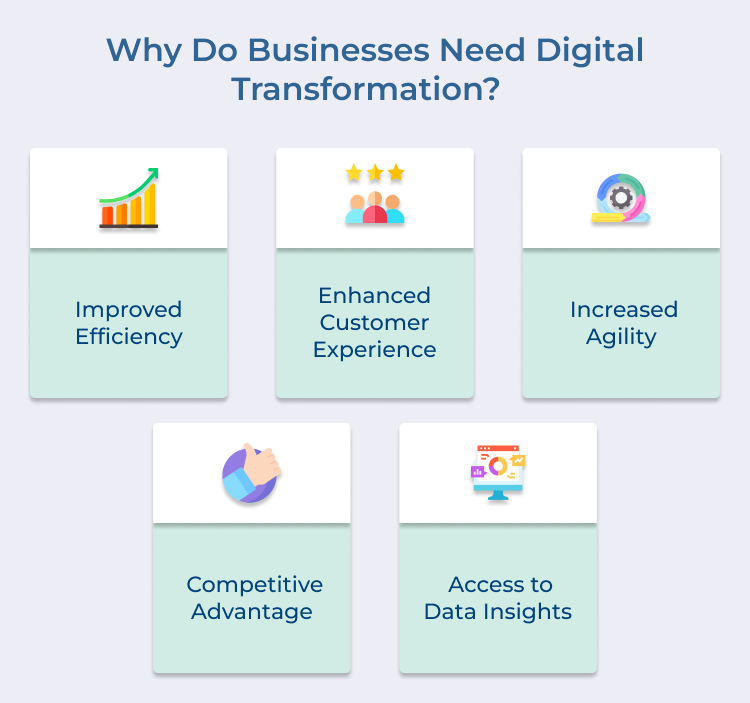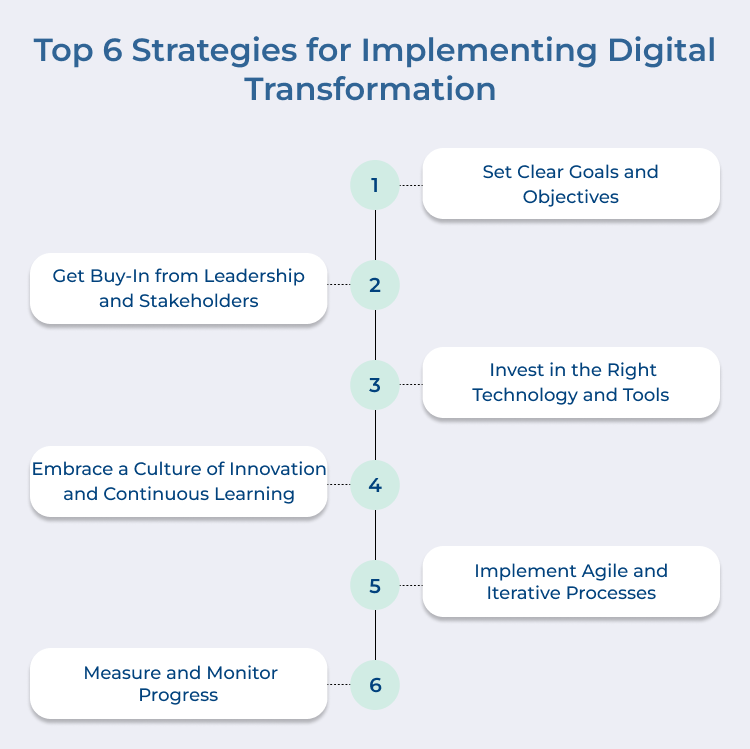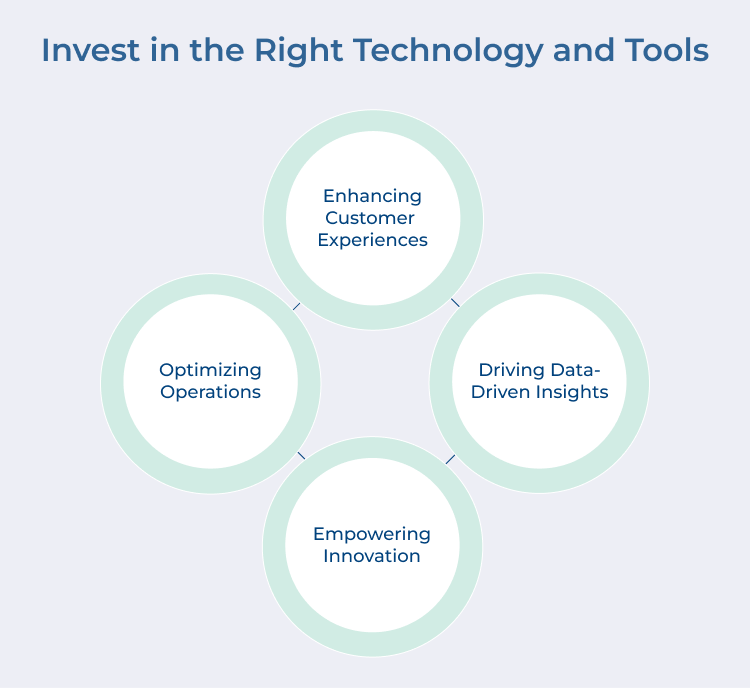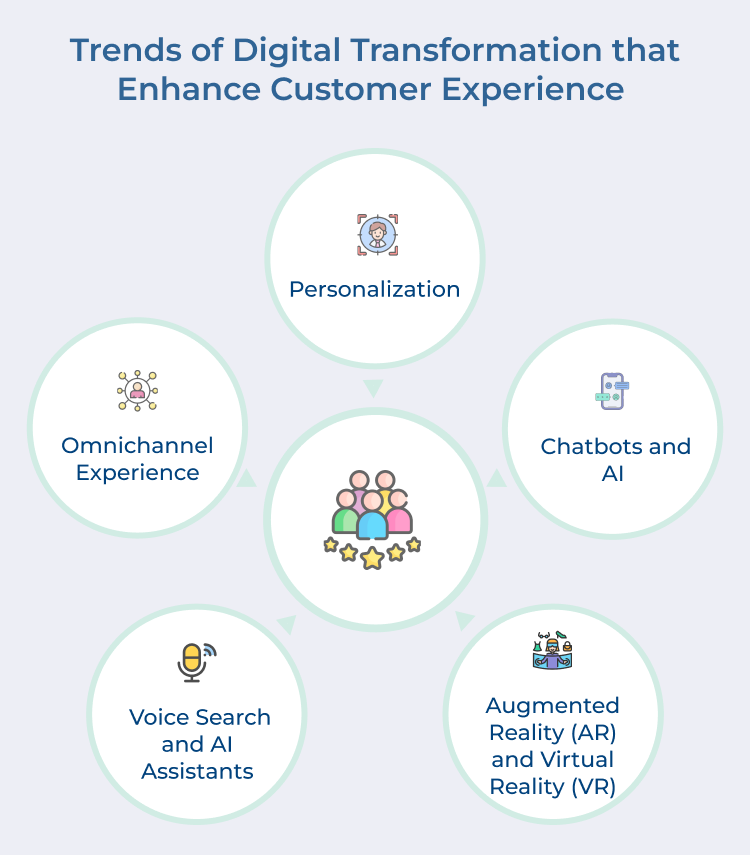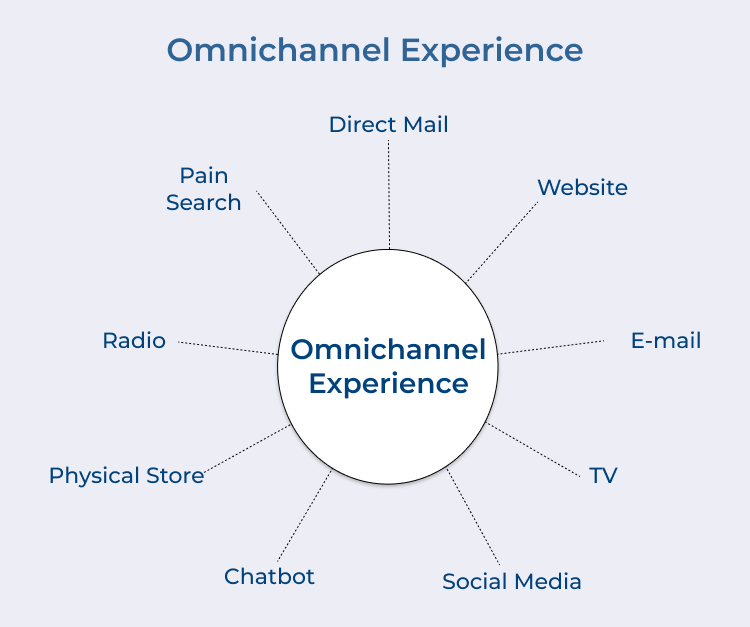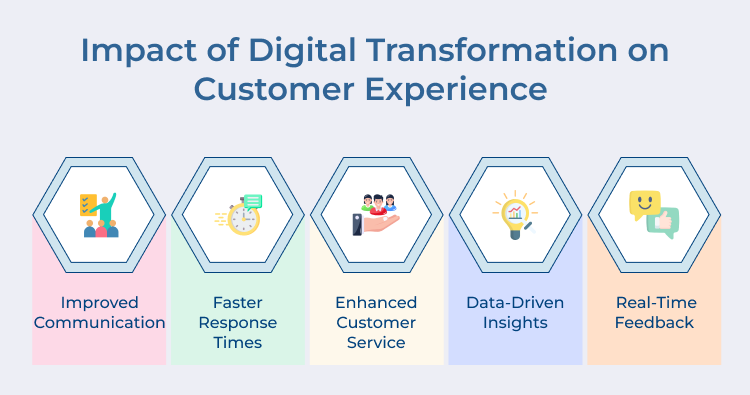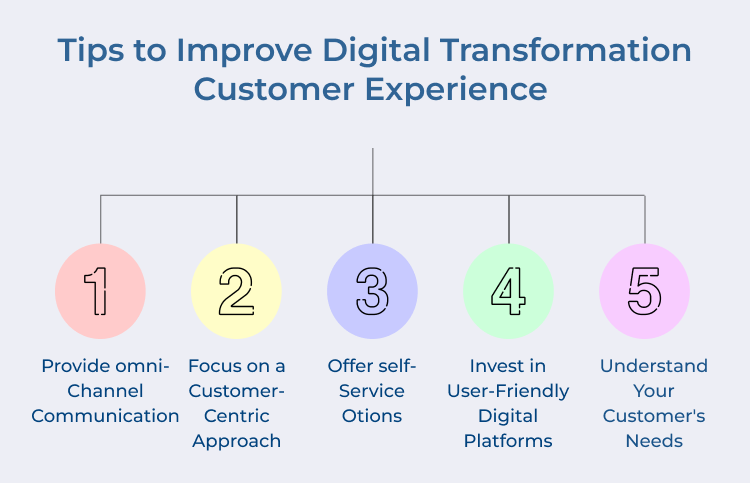Here are some tips to help businesses enhance their digital transformation customer experience:
- Provide omni-channel communication: Customers today expect to be able to interact with businesses through a variety of channels, including websites, social media, email and mobile apps. By doing so, you can provide a seamless and personalized experience across all channels.
- Focus on a customer-centric approach: Businesses must prioritize the client’s needs and align their product/services. Listen to their feedback, understand their pain points and seek ways to enhance their brand experience.
- Offer self-service options: Providing customers with self-service options, such as online portals or chatbots, can help streamline processes. By allowing customers to find answers & complete tasks on their own, businesses can increase productivity and deliver great experience.
- Invest in user-friendly digital platforms: User experience is a critical component of the CX. Investing in user-friendly digital platforms helps customers to easily navigate and interact with the company online. It includes everything from website design to mobile app functionality.
- Understand your customer’s needs: The key to improving the digital transformation customer experience is to truly understand your customers. By collecting data, businesses can gain insights into their needs to tailor marketing strategies and personalize communications.
Top Examples of Digital Transformation Customer Experience
Digital transformation is revolutionizing customer experiences across various sectors, bringing about significant changes in how businesses interact with and serve their customers.
Here are some real-life examples of digital transformation in customer experience
1. Amazon
Amazon is a prime example of digital transformation in the retail sector. The company has revolutionized the way people shop online, offering a seamless customer experience with one-click ordering, personalized recommendations and fast delivery. By leveraging technology such as artificial intelligence and machine learning, Amazon has been able to anticipate customer needs and provide a more personalized shopping experience.
2. Health Tap
Health Tap is a telemedicine platform that connects patients with doctors through video consultations, messaging and virtual appointments. The digital transformation initiative has greatly improved access to healthcare services for patients, making it easier for them to connect with healthcare providers from the comfort of their own homes. It has not only enhanced the customer experience but also increased efficiency and reduced healthcare costs.
3. Chase
Chase Bank has implemented various digital transformation initiatives to improve customer experience, such as mobile banking apps, online account management and digital loan applications. These initiatives have made it easier for customers to manage their finances, access banking services and apply for loans without having to visit a physical branch. It has led to higher customer satisfaction and loyalty.
What Do Digital Customers Expect?
Digital customers expect personalized experiences, seamless interactions, quick responses and high-quality products or services. They value convenience, transparency and authenticity in their interactions with brands online.
Meeting these expectations requires companies to constantly innovate, leverage data & technology and prioritize customer satisfaction. By understanding what digital customers expect, businesses can build strong relationships, drive customer loyalty and achieve success in the competitive digital landscape. It is crucial for organizations to continuously evolve their digital strategies to meet the ever-changing needs and expectations of their customers.

